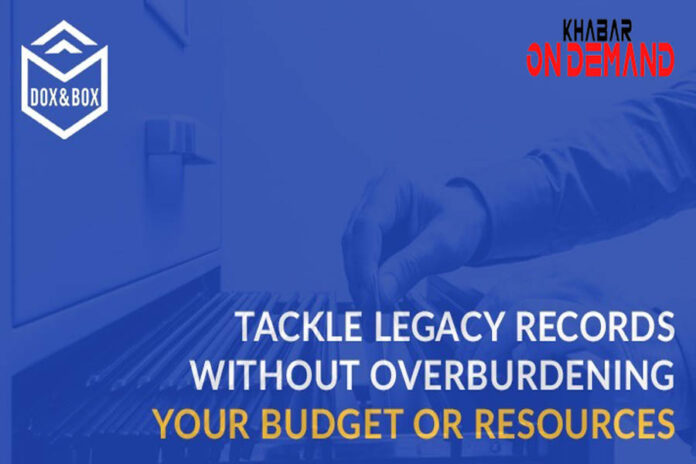Do you work for one of the 70% of companies that have struggled with a “keep everything” culture for years? Have you reached the end of your patience with legacy records? Do you want to move your focus to “clean-up” tasks but don’t know where to get the time or money to do so?
You are not alone if you voted “yes” to any of the questions above. Every day, more businesses recognize that there are compelling reasons to strategize and execute on putting order to the mountains of records that have accumulated in storage over time. The financial planning workbench is a central site where budget chores are managed, reviewed, and approved.
Incomplete or inconsistent indexing or tagging, co-mingled records management in a single box, divergent systems as a result of mergers or acquisitions, and the intricacies of calculating event-based retention are just a few of the challenges that come with putting order to old records. The lack of resources, both human and financial, that would enable you to take control of your records inventory has been a recurring theme in all of these challenges.
What kind of solution do you require?
To understand and identify destruction eligibility dates, you’ll need three things: your organization’s database, which contains information about records (i.e., identification numbers, from/to dates, and so on), your records of exclusive coding, which relates the documents to an appropriate retention rule, and a retention schedule, including event-based rules. The computation procedure is similar regardless of whether the eligible dates are past due or in the future.
You can utilize the workbench in the finance analyst role to:
- Create a budget task: For each budget owner, create a budget task.
- Make the budget task public: Publish the budget task so that budget owners can begin working on the budget period’s plan.
- Follow the plan’s progress: View and track the budget period are promoted plans.
- Approve the strategy: Approve the assignment to approve the promoted plan.
Data should be stored and accessed separately
- Among the functions that can be performed by the Idea module are:
- Separately store ideas and categories from distinct departments, products, or business units.
- You may store and categorize ideas, allow voting, and set up different portal sites with distinct sets of categories, such as HR, IT, and Support if your company is large.
- Create access-control lists in the table that you wish to use for categories to allow only users from a given business unit or department to submit and see ideas belonging to a specific category through the Idea Portal.
Use categories to organize idea submissions
A theme for arranging idea submissions is represented by an idea category. At least one idea category must be connected with every concept submitted through the Idea Portal. For categorizing your idea, you can use values from an existing table or create new idea categories.
Ideas can be submitted, viewed, and subscribed to
You can share your product, feature, change, or upgrade ideas on the Idea Portal. Submit your ideas, browse and subscribe to other users’ ideas, and keep track of a subscribed idea’s progress. Sea View, filter, and sort ideas and collaborate on ideas for further information.
Work together on concepts
Collaborate with other submitters and stakeholders on an idea. To get additional information or to answer inquiries, leave a remark or react to a comment. Vote for the concepts you’d want to see developed further. See Collaborate on ideas for additional details.
Organize and assess ideas
The idea manager evaluates submitted ideas and, if necessary, seeks additional information before deciding whether to accept or reject them. The number of votes cast on a concept aids in determining its popularity and demand. See Manage ideas for additional details.
The following are the specifics of the financial planning workbench:
- The financial analyst can choose the year and budget plan definition. If the budgeting period is still open and the plans haven’t been promoted, the analyst can generate budget tasks for the budget owners.
- The financial analyst can amend the targets and add special instructions to the budget tasks once they’ve been prepared. The budget tasks are made public so that budget owners can work on the budget period’s strategy.
- There will be an advertisement for the open budget or forecast available on the left side of the screen.
So now is the time to use a tried-and-true method for dealing with your legacy records in a cost-effective and legally sound manner. You may focus your efforts on changing to a compliant digitally enabled method of working now that the pressures associated with legacy records have been lifted.



